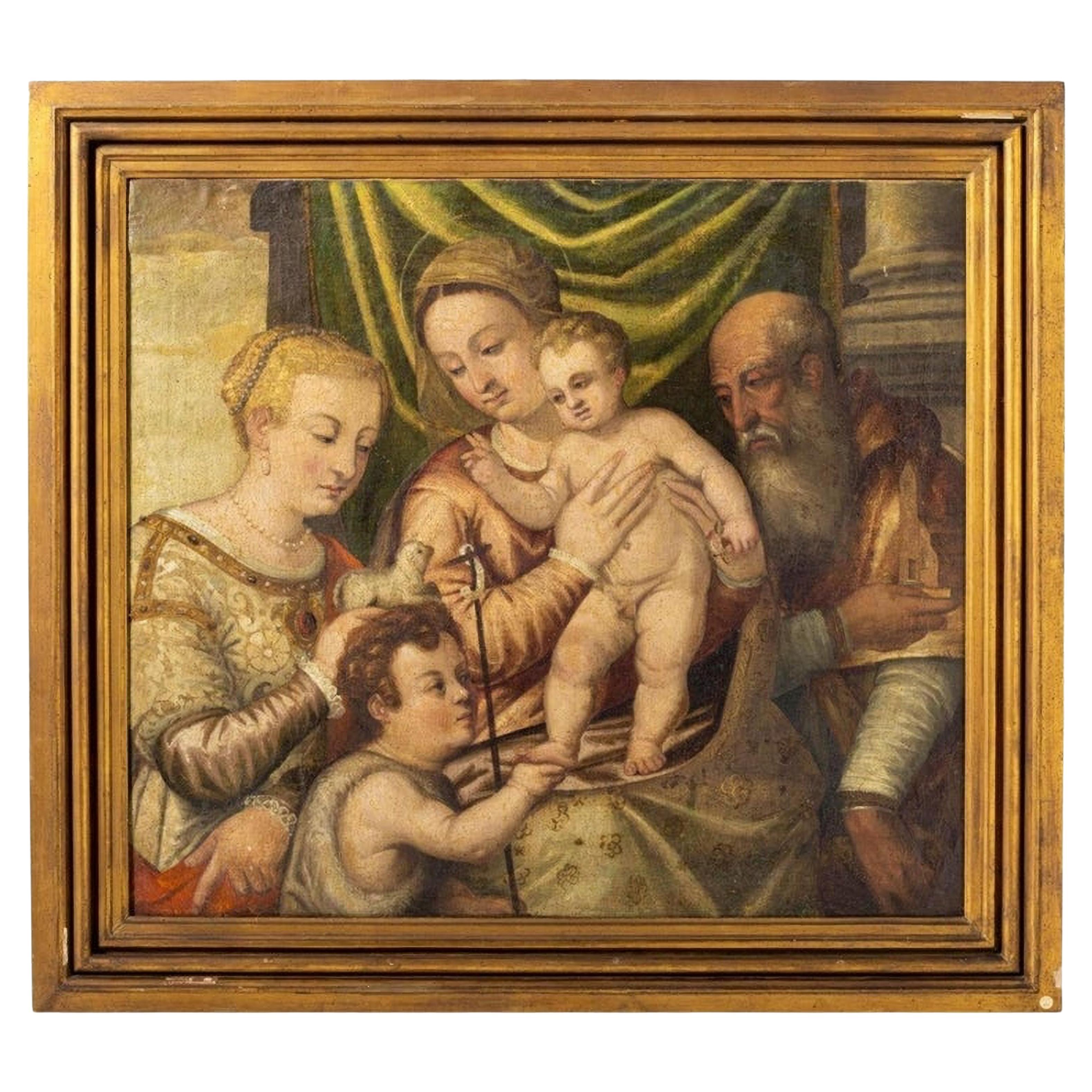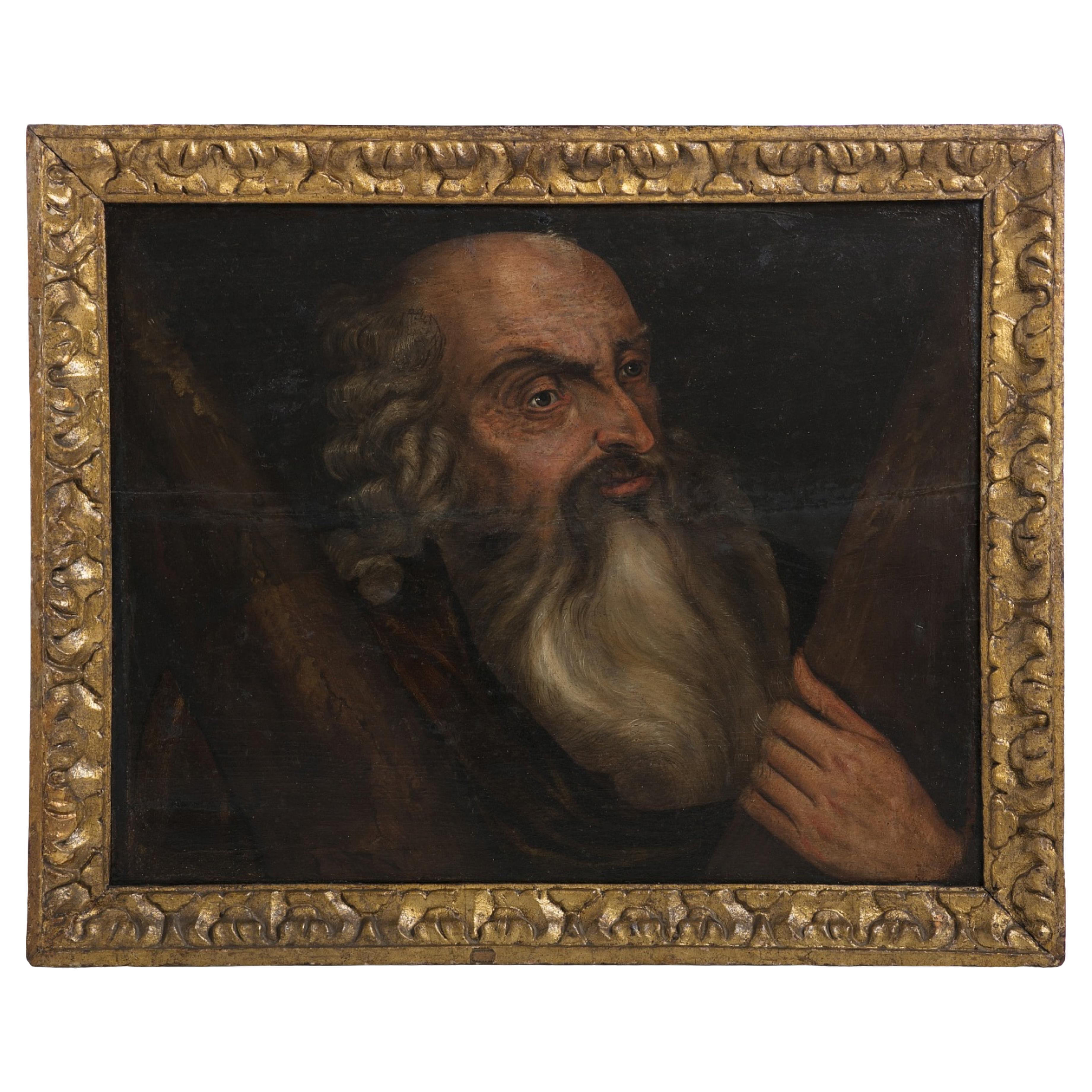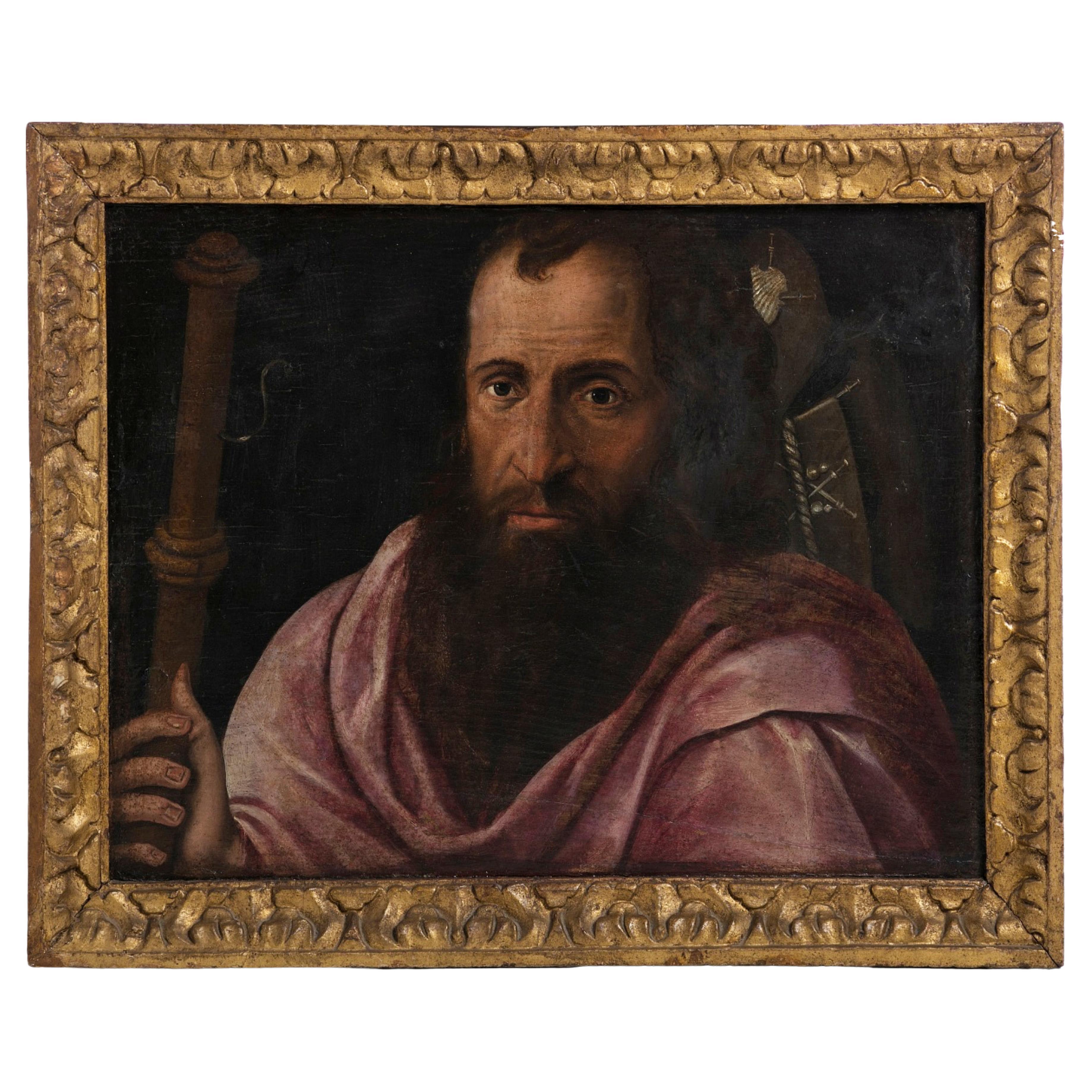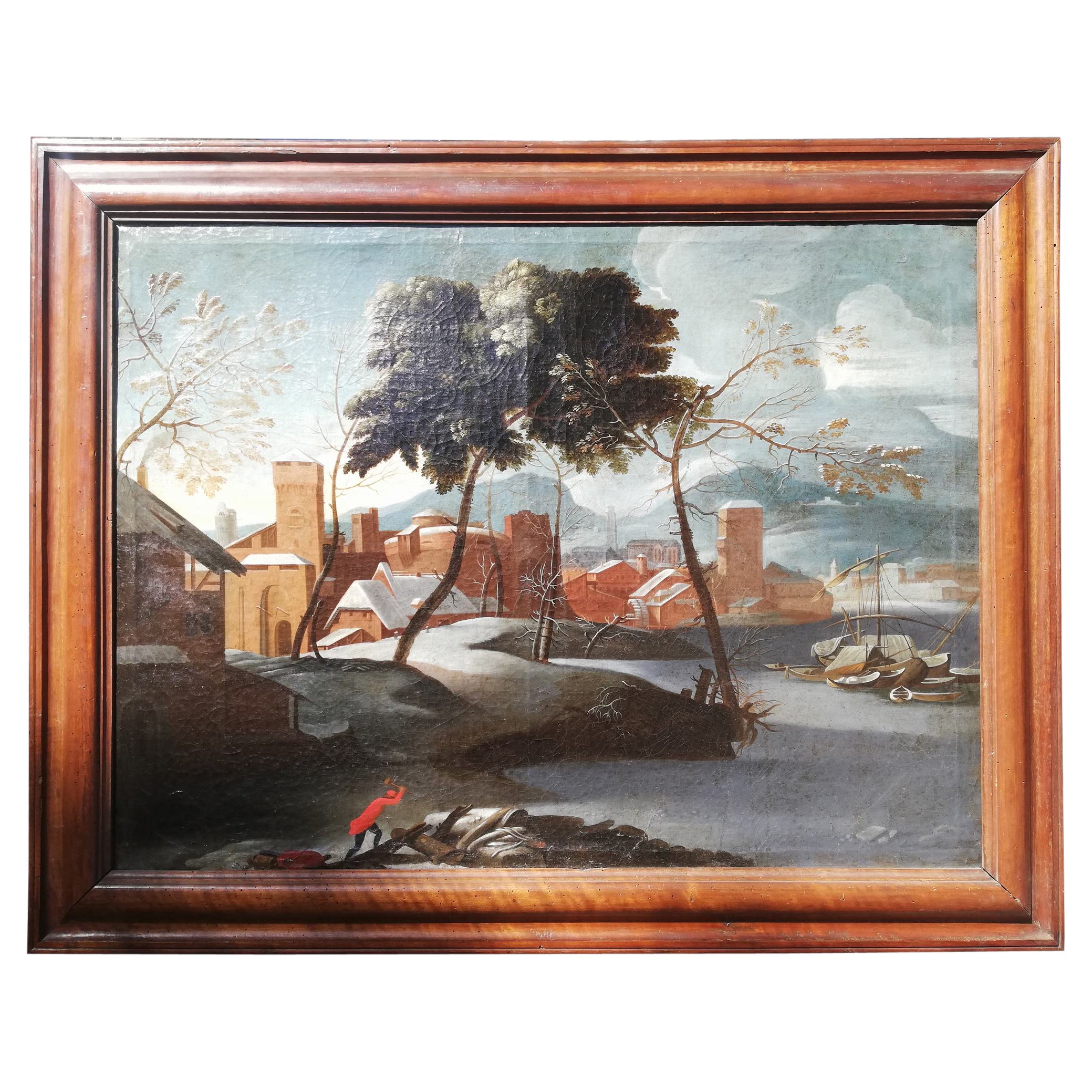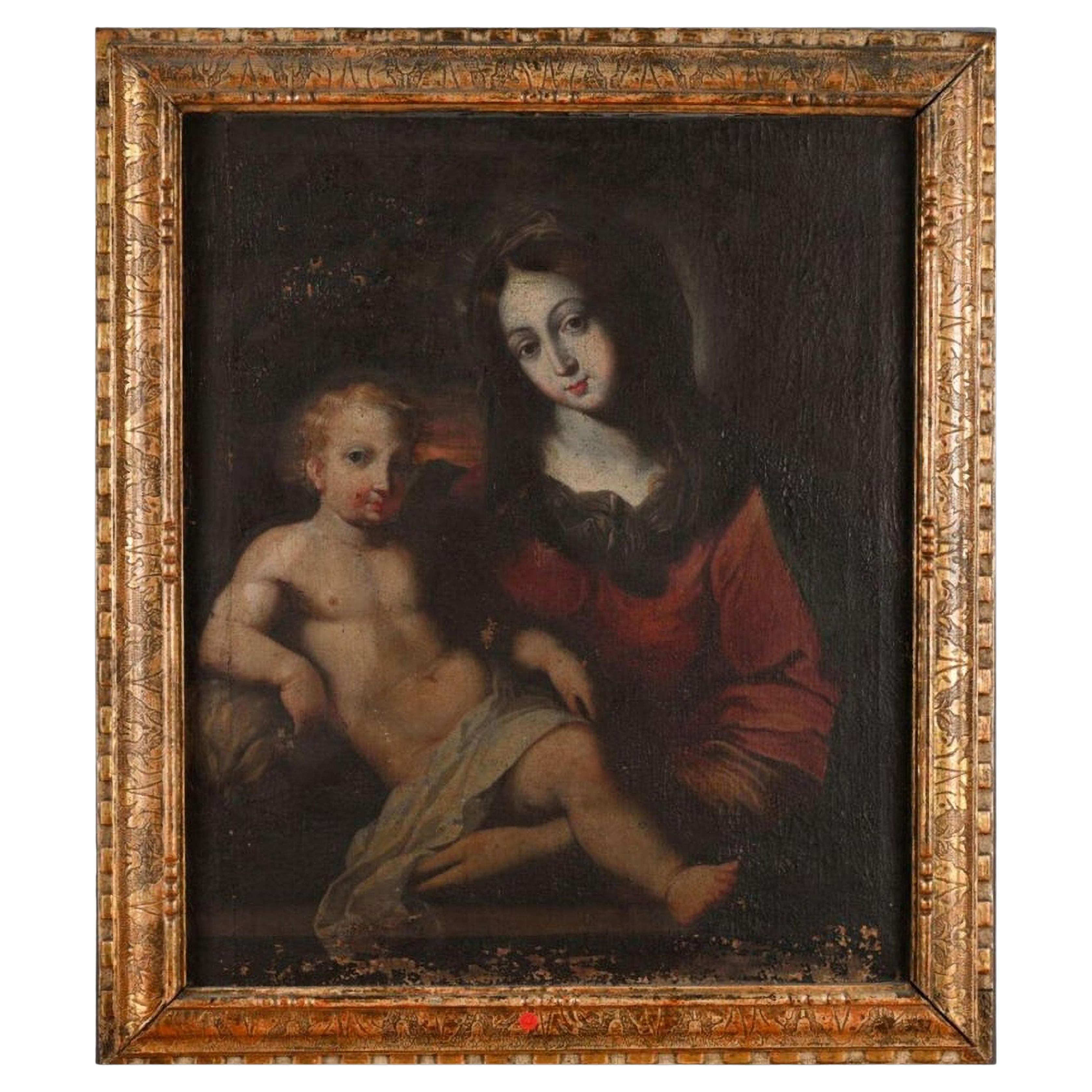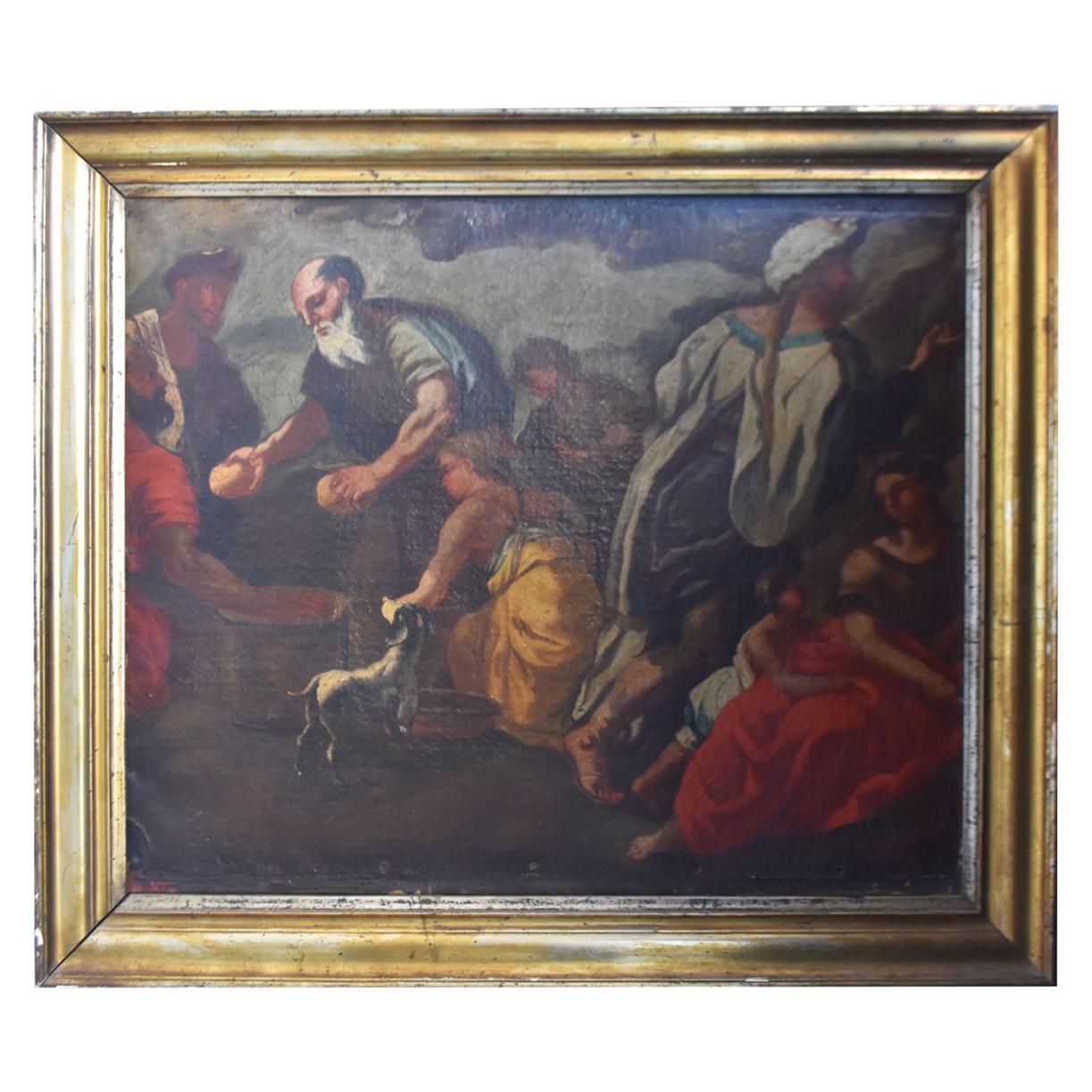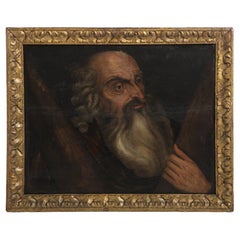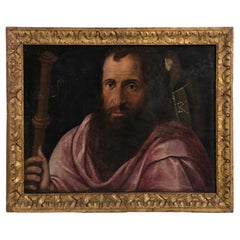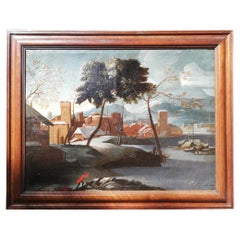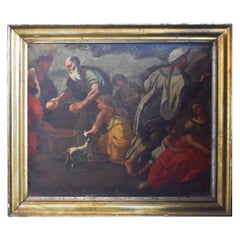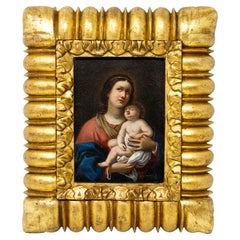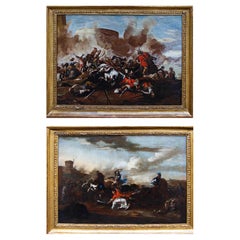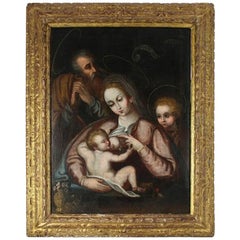Items Similar to Govaert Flinck School (1615-1660) 17th Century "Isaac and His Sons"
Want more images or videos?
Request additional images or videos from the seller
1 of 9
Govaert Flinck School (1615-1660) 17th Century "Isaac and His Sons"
About the Item
Govaert Flinck School (1615-1660) 17th Century
"Isaac and His Sons"
Oil on canvas
116 x 140 cm
Good condition
Govert or Govaert Teuniszoon Flinck (Cleves, January 25, 1615 – Amsterdam, February 2, 1660) was a Dutch Baroque painter.
Born in Cleves, his father apprenticed him to a silk merchant, but having secretly acquired a passion for drawing, he was sent to Leeuwarden, where he stayed with Lambert Jacobszon, a Mennonite better known as an itinerant preacher than as a painter.
Here Flinck joined Jacob Backer, and the company of a young man, like himself determined to become an artist, only confirmed his passion for painting. Among Jacobszon's neighbors in Leeuwarden were the children and relatives of Rombertus van Uylenburgh, whose daughter Saskia married Rembrandt in 1634. Other members of the same family lived in Amsterdam, cultivating the arts both professionally and as amateurs. Lambert's students probably had some acquaintance with Rembrandt through connections with the Uylenburgs. Certainly Joachim von Sandrart, who visited Holland in 1637, found Flinck recognized as one of Rembrandt's best pupils, and he regularly lived in the house of the art dealer Hendrik Uylenburg in Amsterdam.
For many years Flinck worked in the style of Rembrandt, following that master's style in all the works he executed between 1636 and 1648. With aspirations as a history painter, however, he looked to the swollen forms and grand action of Peter Paul Rubens, which led to many official and diplomatic painting commissions. Flinck's relationship with Cleves eventually became very important. He was introduced to the court of the Great Elector, Frederick William I of Brandenburg, who married Louise of Orange in 1646. He obtained the patronage of John Maurice of Nassau, who was appointed stadtholder of Cleves in 1649. In 1652, a citizen of Amsterdam, Flinck married an heiress, daughter of Ver Hoeven, a director of the Dutch East India Company. He was already well known even in patrician circles presided over by the brothers Cornelis and Andries de Graeff and the Seix de Echevin; he was a close friend of the poet Vondel and the treasurer Uitenbogaard. In his house, adorned with antique molds, costumes, and a noble collection of prints, he often received Stadtholder John Maurice, whose portrait is still preserved in the work of the learned Barleius.
In the same year, he received flattering recognition from the city council of Cleves and the completion of a painting of Solomon that was the counterpart to the composition in Amsterdam. This and other paintings and portraits, such as those of Frederick William and John Maurice, and the allegory of Louise of Orange attended by Victory and Fame and other figures at the cradle of the Elector's firstborn, have disappeared. Of several paintings that were painted for the Great Elector, none survive, except for the Expulsion of Hagar in the Berlin museum.
Like many other Dutch artists, Flinck has a limited presence in Spanish museums. The Thyssen-Bornemisza Museum in Madrid owns a Portrait of a Gentleman, and the National Museum of Catalan Art in Barcelona owns a Head in Negro (c. 1640) attributed to him, donated by the politician and collector Francesc Cambó.
- Creator:Govaert (Gabriel van der) Leeuw (Artist)
- Dimensions:Height: 45.67 in (116 cm)Width: 55.12 in (140 cm)Depth: 2.37 in (6 cm)
- Style:Baroque (Of the Period)
- Materials and Techniques:Paint,Oiled
- Place of Origin:
- Period:
- Date of Manufacture:17th Century
- Condition:Wear consistent with age and use. good condition for the age.
- Seller Location:Madrid, ES
- Reference Number:1stDibs: LU5779244408912
About the Seller
4.8
Platinum Seller
Premium sellers with a 4.7+ rating and 24-hour response times
Established in 2005
1stDibs seller since 2021
356 sales on 1stDibs
Typical response time: 1 hour
- ShippingRetrieving quote...Shipping from: Madrid, Spain
- Return Policy
Authenticity Guarantee
In the unlikely event there’s an issue with an item’s authenticity, contact us within 1 year for a full refund. DetailsMoney-Back Guarantee
If your item is not as described, is damaged in transit, or does not arrive, contact us within 7 days for a full refund. Details24-Hour Cancellation
You have a 24-hour grace period in which to reconsider your purchase, with no questions asked.Vetted Professional Sellers
Our world-class sellers must adhere to strict standards for service and quality, maintaining the integrity of our listings.Price-Match Guarantee
If you find that a seller listed the same item for a lower price elsewhere, we’ll match it.Trusted Global Delivery
Our best-in-class carrier network provides specialized shipping options worldwide, including custom delivery.More From This Seller
View AllFlemish School 17th Century
Located in Madrid, ES
Flemish school 17th century
"Our Lady with the Child Jesus, St. John, St. Elizabeth and Zacarias".
Oil on canvas Relined.
Dimensions: 74 x 84 cm
good conditions.
Category
Antique 17th Century Dutch Baroque Paintings
Materials
Paint
Italian School "Apostle" 17th Century
Located in Madrid, ES
Italian School
"Apostle" 17th Century
Oil on oak wood
Carved and gilded wooden frame.
Small defects.
Dim.: 44 x 58 cm
good conditions
Category
Antique 17th Century Italian Baroque Paintings
Materials
Paint
Italian School "Apostle" 17th Century
Located in Madrid, ES
Italian School
"Apostle" 17th Century
Oil on oak wood
Carved and gilded wooden frame.
Small defects.
Dim.: 44 x 58 cm
good conditions
Category
Antique 17th Century Italian Baroque Paintings
Materials
Paint
Flemish School "Landscape" 17th Century
By Flemish
Located in Madrid, ES
OIL ON CANVAS OF 17th Century
LANDSCAPE OF WINTER OF THE NETHERLANDS.
Good CONDITION.
MEASURES WITH FRAME: 114X90 CM WITHOUT FRAME: 96X74 CM
Category
Antique 17th Century Dutch Baroque Paintings
Materials
Paint
Early 17th century French School "Virgin and Child "
Located in Madrid, ES
Early 17th century French School
"Virgin and Child "
Oil on canvas (Original canvas, restorations, gaps)
71.5 x 60.3 cm
Provenance Duc de Lesdiguières, according to an old label ...
Category
Antique 17th Century French Baroque Paintings
Materials
Paint
SPANISH SCHOOL 17th Century "Still Life"
Located in Madrid, ES
SPANISH SCHOOL 17th Century
"Still life".
Oil on canvas
Recovered.
Dim.: 65.5 x 55.5 cm.
good conditions
Category
Antique 17th Century Spanish Baroque Paintings
Materials
Paint
You May Also Like
17th Century Italian School Biblical Scene
Located in Marseille, FR
17th century oil on canvas representation of the "Feeding of the 4,000" of Italian school.
Category
Antique 17th Century French Baroque Paintings
Materials
Canvas
Roman school, 17th century, Madonna and Child
Located in Milan, IT
Roman School, 17th century
Madonna and Child
Oil on copper, 15 x 11 cm
Framed, 26 x 22 cm
The small copper on display here depicts the Madonna and Child against a dark background...
Category
Antique 17th Century Italian Other Paintings
Materials
Copper
Neapolitan school, 17th century, battle scenes
Located in Milan, IT
Neapolitan School of the 17th Century
Battle scenes between Christians and Turks
(2) Oil on canvas, 52 x 71 cm
Framed, 61 x 80 cm
One genre that met with wide acclaim in seventeenth-century Neapolitan painting and flattering success among collectors was that of battle. The Parthenopean nobility loved to adorn the walls of their salons with battles depicting single acts of heroism or complex combats that exalted patriotism and warlike prowess, virtues with which members of the wealthy aristocracy of the time liked to identify.
The Church, in the Neapolitan area, was also at the forefront of commissions, commissioning artists to depict the spectacular triumphs of Christendom over the infidels, such as the memorable naval battle of Lepanto in 1571, which marked a historical turning point with the great victory over the Turks, becoming a repeated iconographic motif imbued with devotional value, replicated several times through the interest of the Dominican order, which was very devoted to Our Lady of the Rosary, who benevolently followed earthly events from above in heaven. Other themes dear to the Church within the genre were drawn from the Old and New Testaments, such as Constantine's Victory at the Milvian Bridge or St. James at the Battle of Clodius.
Among the leading Neapolitan artists of that period, several specialized in battle scenes: these include Francesco Graziani, known as Ciccio Napoletano, a battler active between Naples and Rome in the second half of the 17th century; Andrea De Lione, who lived in Naples from 1610 to 1685, a versatile narrator of battles without heroes, of horsemen assaulting or retreating, and of profane scenes immersed in a wild and primordial, yet already classicized, nature; and Carlo Coppola. The latter was active for more than twenty years, from 1640 to 1665, and his catalog, which is interesting because it bears witness to a particular historical moment and the tastes of private patrons, has yet to be defined, although many of his works are initialed. It is precisely to Coppola's corpus that these two paintings could come close: with the production of the Neapolitan battler the two paintings seem to share the smoky colors, the accentuated chiaroscuro and the marked dynamism of the scenes. Moreover, it is necessary to mention how that of the battle between Christians and Turks was an absolutely central theme in Coppola's pictorial production. Also close to the manner of the two paintings analyzed here is the production of one of Coppola's most celebrated pupils, Giovanni Luigi Rocco...
Category
Antique 17th Century Italian Other Paintings
Materials
Canvas
$9,082 / set
17th Century Spanish School Breastfeeding Virgin
Located in Marbella, ES
Beautiful oil on canvas with four protagonists, the Virgin breastfeeding baby Jesus with St. Joseph and a young St. John the Baptist. Typical 17th century composition with the secondary characters in the background. Relined canvas and original gold leaf gilded frame...
Category
Antique 17th Century Spanish Renaissance Paintings
Materials
Wood, Paint
17th Century, Italian Painting by Pier Francesco Cittadini, Jacob and his Family
Located in IT
Pier Francesco Cittadini (Milan, 1616-Bologna, 1681)
"Jacob and his family go to Egypt"
Oil on canvas, cm 109 x 190 (canvas only)
The valuable painting, made in oil on canvas, depicts Jacob and his family go to Egypt and we believe it can be, given the high quality painting, autograph work of Italian Pier Francesco Cittadini (Italy Milan, 1616 - Bologna, 1681) made after 1647. The work, in excellent condition is accompanied by a coeval frame in wood finely carved and golden.
The scene depicted, which was confused with the Flight to Egypt in the past years, is instead identified with the biblical episode of Jacob’s journey. In the foreground, reading the painting from left to right, we see a caravan composed of animals, including donkeys, dromedaries, goats, dogs and horses and people, women, men and slaves, who carry on their journey along the banks of a river, following a path that to the right, would seem to lead to the through of a bridge. In addition to the watercourse is described an environment characterized by large rocks and impervious come far to cover the entire verticality of the canvas. On the left, in the distance, we see the tail of the caravan that runs along the steep path. Large trees enliven and harmonize the environment, as well as white and grey clouds characterize the predominantly clear sky and illuminated on the right by sunlight.
The story is told in the Bible, Book of Genesis, 30, 25, passage in which is described the flight of Jacob from Haran after the contrasts with Laban, father of his wife Rachel. Jacob is the third great patriarch of the Bible. From his descendants originate the twelve generations of the people of Israel. He is the son of Isaac and Rebekah, who led him to flee from the wrath of Esau to Haran to seek refuge from his brother, Laban. At his uncle’s house Jacob met his daughter Rachel. As soon as he saw his cousin, Jacob was taken. Jacob will stay seven years in the service of Laban to marry his beloved Rachel. But Laban, with a deception, will give him in marriage first Lia, the least beautiful eldest daughter, and only after another seven years the splendid Rachel. From his first wife he will have several children, while Rachel will give birth to the beloved son, Joseph, who will become viceroy of Egypt.
After years of service, Jacob asked to be paid with every dark-coloured garment among the sheep and every spotted and dotted garment among the goats. Laban accepted and sent away from his sons all the leaders of that kind. So Jacob took fresh branches of poplar, almond and plane tree, and flayed them, and put them in the troughs. The optical suggestion induced the goats and the sheep to conceive and give birth to dark, striped and dotted garments. He also ensured that all the strongest and healthiest leaders of the flock of Laban would drink near the barked branches, thus assuring a genetic superiority to his part of the flock. His flocks grew numerous and strong and he became richer than his relative, arousing envy. It was clear that Laban would not respect him much longer. At the suggestion of the Lord, Jacob decided to return to Canaan. Trying to avoid any possible dispute, he left with his family while Laban was absent for shearing sheep. But when, three days later, his uncle returned home, he became angry, feeling offended because Jacob had gone secretly and had not allowed him to greet his daughters and grandchildren. In addition, his teraphim, statuettes, or idols, which depicted the family deities, had disappeared. After 7 days of pursuit, Laban and his men reached Jacob’s group on Mount Gilead, in the mountainous region west of the Euphrates River, where his uncle and grandson had a stormy conversation. The younger man was outraged at being accused of stealing idols and told Labano to rummage through his family’s tents at will. Neither of them could know or even imagine that it was Rachel who took the idols and hid them in the saddle of the camel. During the search, she sat down firmly on the saddle, apologizing for not being able to get up, «because I usually have what happens to women» (Gen 31:35). So the loot wasn’t discovered.
The author of this work was inspired by the composition of an engraving by Stefano Della Bella (1610-1664) of circa 1647. The engraving by Stefano della Bella bears the title "Iacob sur ses vieux jours quitte sans fascherie pour voir son filz Ioseph, sa terre et sa patrie" and is signed on the bottom left "Stef. of the Beautiful In. et fe." while on the right it is declared "Cum privil. Regis", that is with license of the king.
Stefano Della Bella (Italy - Florence, May 18, 1610-Florence, July 12, 1664) was born in a family of painters, sculptors and goldsmiths and was left early orphan of his father sculptor, he dedicated himself first to the art of goldsmith at the school of Giovanni Benedetto Castiglione and Gasparo Mola, then turning his attention to drawing and engraving. He soon began drawing figures and copying the etchings of Jacques Callot, which inspired his early works. Under the protection of the Medici, in particular of Don Lorenzo, cadet son of Grand Duke Ferdinand I, Della Bella has the opportunity to make study trips to Rome, where he stayed from 1633-1636; In Rome he met French engravers and publishers of prints such as Israël Henriet and François Langlois, who influenced his decision to move to Paris in 1639, four years after the death of Callot. In Paris he soon reached, thanks to the engravings commissioned by Cardinal Richelieu, the success also worldly; he frequented courtiers, theatre artists and writers, while refusing too oppressive honors. In 1646-1647 he continued his travels in the Netherlands to Amsterdam, Antwerp and Dordrecht. He returned to Florence in 1650 and resumed working under the protection of the Medici court, working for his patrons. In 1656 he became a member of the Academy of Apatists.
The painting object of this study is reasonably attributable to Pier Francesco Cittadini, or Pierfrancesco Cittadini, called the Milanese or the Franceschino (Italy - Milan, 1616-Bologna, 1681) as some exemplary stylistic comparisons proposed to follow can prove.
Pier Francesco Cittadini was an Italian baroque painter, mainly active in Bologna.
His artistic training first took place with the painter Daniele Crespi...
Category
Antique Mid-17th Century European Baroque Paintings
Materials
Canvas, Giltwood
$35,400 Sale Price
32% Off
17th Century Oil on Canvas Flemish Mythological Antique Painting, 1660
Located in Vicoforte, Piedmont
A splendid 17th century Flemish painting. Oil on canvas artwork depicting a mythological subject of great charm, Meleager offers the boar's head to Atalanta. The Fates had predicted ...
Category
Antique 1660s Dutch Paintings
Materials
Canvas
$8,384 Sale Price
20% Off
Free Shipping
